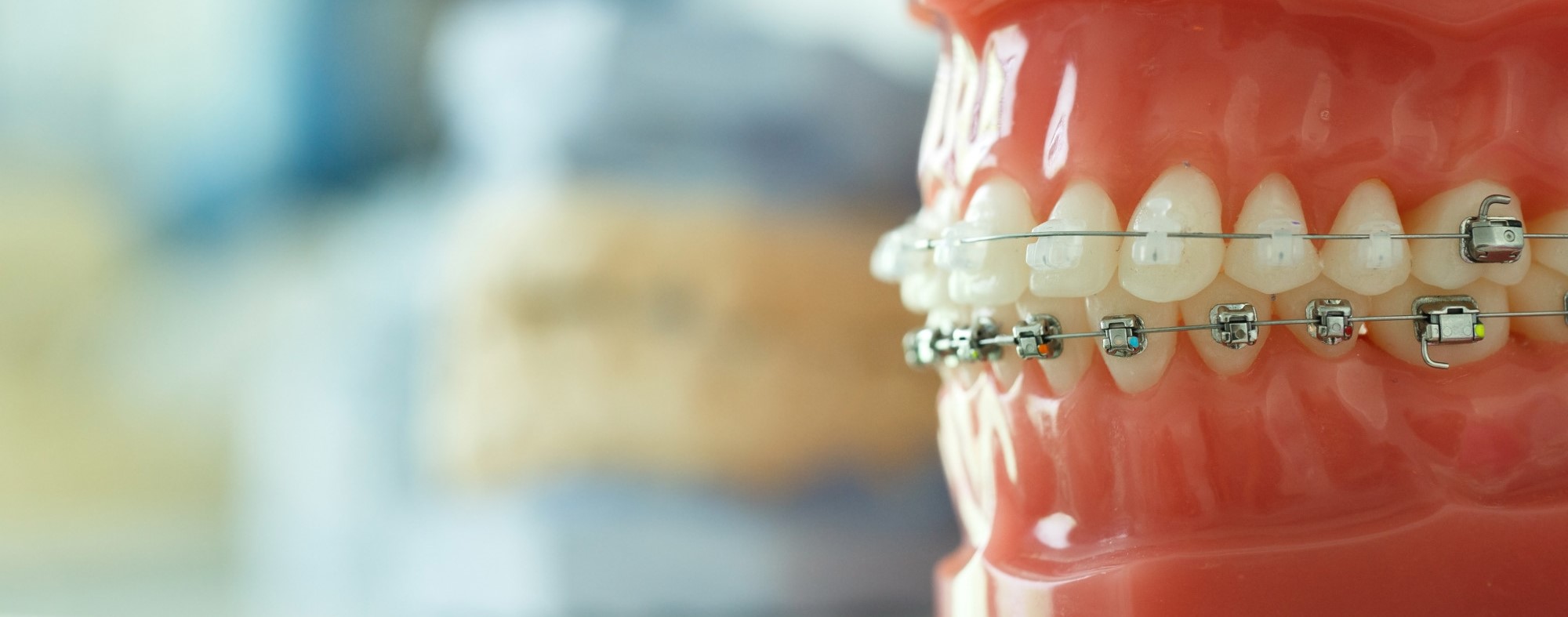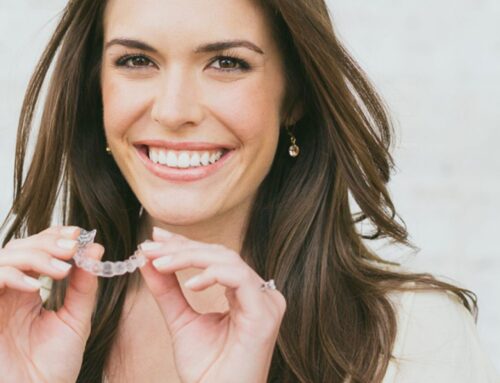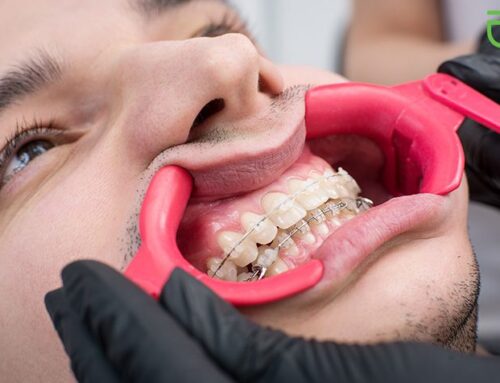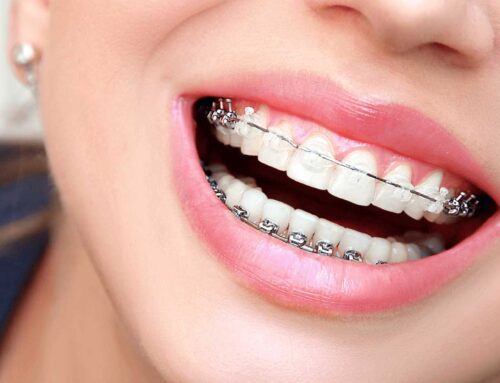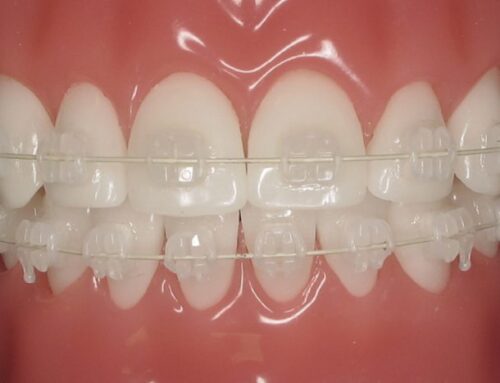Correcting Underbites Using Orthodontic Treatments & Braces
There are many benefits to undergoing orthodontic treatment to address the issues associated with an underbite. Misaligned teeth can eventually lead to more significant dental issues over time, so taking steps to correct underbites is an important part of your overall health care. Correcting an underbite is a very straightforward and simple orthodontic procedure that can be done using multiple different styles of braces.
It’s quite common for there to be at least some type of misalignment in the teeth of most people, and in the majority of cases these are minor anomalies that don’t necessarily lead to any long-term dental problems. However, if the misalignments are more pronounced, there is a chance that other types of dental health issues could develop. For patients who have an underbite, it is often a wise decision to undergo orthodontic treatment to help realign the teeth and achieve an optimum bite pattern to prevent other problems from arising in the future.
Understanding why underbites should be corrected starts with learning a bit more about what underbites are, and why some people are affected by them while others are not. In fact, there are many terms used to differentiate between the common types of bite patterns, including underbite, overbite, crossbite, and open bite. These are all referred to by dentists as ‘malocclusions’, and there are some key differences to know between each of them.
What’s the Difference Between Underbites, Overbites, and Other Common Bite Patterns?
Underbite – An underbite occurs when the lower jaw extends forward to the point where the lower teeth will have overlapped the outside of the upper teeth when the bite is closed.
Overbite – An overbite occurs when the lower jaw sits back further than the upper jaw, causing the upper teeth to excessively overlap the lower teeth vertically when the bite is closed.
Crossbite – A crossbite is a combination of overbite and underbite, where some areas of the upper teeth overlap the lower teeth, and other areas of the lower teeth overlap the upper teeth when the bite is closed.
Open Bite – When the bite is closed and there is a noticeable vertical gap between the biting surfaces of the front teeth, it is referred to as an open bite.
Overjet – An overjet is where the front upper teeth are angled outward and away from the lower front teeth horizontally, rather than vertically in the case of an overbite, when the bite is closed.
Bite pattern problems like these all come in varying degrees of severity, from minor visual alignment anomalies to major issues that can cause troubles with speech, eating and drinking. Why do teeth end up misaligned like this? There are multiple possible factors to consider when identifying the underlying cause of underbites.
What Causes Underbites?
For some people, the answer is simply genetic. If a person’s parents both have underbites, or had them when they were younger, there’s a good chance that this person will, too. In other cases, underbites can occur as a result of repetitive actions over a long period of time during childhood jaw development, such as thumb sucking or extensive use of a pacifier. Sometimes an injury or an accidental impact can result in damage to the jaw bones, thereby leading to the future development of an underbite. Crowding of the teeth in the jaw can also result in an underbite as more teeth emerge and the jaw has not grown large enough to adequately accommodate them.
It’s not easy to predict who may or may not be at risk of developing an underbite, and there are some conditions that can increase the likelihood of teeth becoming misaligned. For example, there are cases where the unknown growth of a tumor in the jaw or face can result in the forward movement of the lower jaw. In the event that a person does start to notice a change in their bite pattern for no apparent reason, it’s essential that they book an appointment for a thorough dental exam to identify the underlying cause.
Why Is It Important to Correct an Underbite?
As with any type of bite pattern problem, an underbite can lead to a wide range of potential dental issues if left untreated. Certainly, the most immediate effect of an underbite is the visual appearance of the smile and jaw. Depending on the severity of the misalignment, this can be subtle and barely noticeable, or dramatic and quite pronounced. This can result in the person feeling self-conscious about their smile, and even potentially lead to apprehension about engaging in social situations.
In addition, tooth misalignments like those that occur in underbites can increase the difficulty in properly chewing food, as well as making it more challenging to maintain a diligent oral care routine at home. Misaligned teeth can sometimes be harder to floss and brush, resulting in an increased likelihood of developing tooth decay or gum disease. Tooth misalignments can also produce uneven or excessive wearing of the enamel of the teeth, weakening them and increasing the chance of tooth sensitivity.
Other negative effects of underbites include a greater chance of experiencing sleep apnea, tooth grinding, speech impediments, chronic pain, and headaches. All of these issues can increase in intensity and severity in relation to the scope of the underbite, and how long the condition remains untreated. For these reasons, it is of utmost importance to seek treatment for underbites and have the teeth realigned into a more optimum orientation.
Sometimes if the cause is determined to be related to tooth crowding, tooth extraction may be necessary to alleviate the crowding. In some rare cases, when the underbite is excessive in scope, the process of treatment may include surgery to correct the shape or orientation of the jawbones causing the misalignment. The best course of action will be determined after a thorough oral examination and review of the patient’s dental history, but in most cases of underbite, orthodontics will be the best option.
How Are Braces and Orthodontics Used to Correct Underbites?
To realign the teeth and correct underbites back to a more ideal bite pattern, dentists will likely recommend orthodontic treatment. Braces are the most effective way to address bite pattern problems and provide patients with the great looking smile they deserve. Braces are able to achieve these results by exerting a gentle but constant pressure on the teeth. This pressure is applied in a very precise pattern to gradually guide the teeth and reorient them, with adjustments to the braces being made at regular intervals to continue the movement and complete the course of treatment.
In order to assist with the forward and backward adjustment of the jaw that is often necessary to treat an underbite and other types of malocclusions, braces may be accompanied by temporary dental appliances. You see, while braces focus mainly on realigning the teeth, it is not always enough to completely address the issue of misalignment in the jawbones themselves. To do this, methods such as elastics to provide additional tension or resistance on the jaw, or wearable orthodontic headgear, will be used to work along with braces and realign the jaw itself.
Most orthodontic treatments take between 12 months and 24 months to complete, but the exact timeline needed can be shorter or longer depending on the specific nature of the patient’s condition and the type of braces used. Orthodontists can choose from several styles of braces to correct an underbite, and will offer patients the best options based on their unique needs.
What Different Styles of Braces Can Be Used for Underbites?
Traditional Metal Braces
Metal braces are the most common and popular style of orthodontics used to treat underbites, as they offer the greatest flexibility and the widest range of customization options. Metal braces consist of four main components; brackets, bands, arch wires, and ligatures. Brackets are affixed to each of the teeth using an ultra-strong dental adhesive. Bands have brackets attached to them, and are placed on the back molars, wrapping around the outer circumference of the teeth. Arch wires are long, thin metal wires that run through the brackets and bands along the span of each arch of teeth, top and bottom. Ligatures are small elastic bands that fit over top of the brackets, holding the arch wires securely in place.
Metal braces are also used when headgear is necessary in order to achieve the desired realignment of the top and bottom jaw. Metal braces are easily fitted with connections with which to attach headgear, allowing it to be removed and reattached as needed.
Ceramic Braces
Similar in shape and style to metal braces, ceramic braces offer a subtle visual appearance thanks to the specialized ceramic composite material used to manufacture the brackets. These materials can be white, clear, or color-matched to blend with the natural tooth shade of the patient, making them far less noticeable. Ceramic braces can also be fitted with attachments for headgear, making them a viable option for treating a wide range of underbite cases where patients prefer a less noticeable appearance.
Fast Braces
When a patient wants to get their treatment completed in the least amount of time, dentists may recommend fast braces. Also known as accelerated braces, fast braces are much like metal braces in appearance, however they utilize a special bracket design that works to speed up the movement of the teeth. Often accompanied by therapies like phototherapy and subsonic wave therapy, fast braces have been proven to reduce the total time needed to achieve results by as much as 50% in some cases. For patients with underbites, the possibility to get results faster is often very appealing. Fast braces can be used in conjunction with headgear as well.
Invisalign Invisible Braces
One of the most sought-after styles of braces these days is the Invisalign system of invisible braces. Instead of metal brackets, bands, and wires, Invisalign instead uses clear plastic tooth aligners that are worn snugly over the teeth. These thin plastic aligners are virtually undetectable when worn, and offer the best possible comfort and convenience of all orthodontic treatments. Invisalign aligners can be removed and replaced by the patient at any time, making it easier to eat and drink, as well as to perform their regular oral care routine.
Invisalign is an effective way of treating underbites that are caused specifically by tooth misalignment; however the thin plastic aligners are not compatible with traditional orthodontic headgear appliances. There’s simply no method of attaching the headgear to the aligners like there is with metal or ceramic braces. Because of this, if there is more significant movement required in the jaw in order to achieve the desired results, an alternate style of braces may be recommended.
Book an Assessment Today & Find Out the Best Way to Correct Your Underbite
If you have an underbite and are wondering what the best approach is to getting a more uniform and aligned smile, now is a great time to book an appointment for a no-obligation orthodontic assessment. The team here at Georgian Dental will gladly explain all your available options for braces and provide guidance on what the treatment experience for your underbite might look like. We are here to help you get your smile in style, so don’t delay and contact us today. We look forward to your visit!
Appointment Request
If you’re interested in any of our procedures, and would like to meet with one of our dentists to discuss options, costs and get additional information, complete this short form and we’ll give you a call to arrange for a no-obligation appointment at our Barrie clinic.
